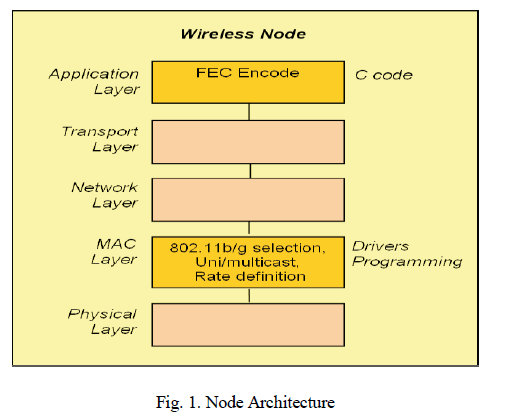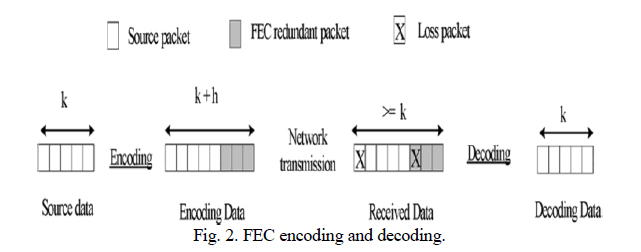Keywords
|
| Spatial digital watermarking, LSB Method, quality attribute, noise densities, Estimator, Correlation Coefficient, PSNR |
I. INTRODUCTION
|
| The rapid growth of technology and innovative techniques have made the availability of digital information in the form of audio, video & images quiet easily and immensely in reach to public via web. Hence the chances of data manipulation increases and the data authenticity becomes a big question. Watermarking schemes so available is a smart solution for the same. The main concern in such techniques is the robustness & imperceptibility. |
| Information hiding is an age old technique. Data hiding, stenography & digital watermarking are sub discipline of information hiding [1]. Nowadays technologies are changing so to use digital watermarking instead of the age old techniques for hiding information & protecting multimedia data has become the greatest area of interest. |
| The watermarking can be applied to the multimedia data like Images, text, audio & video. Watermarking technique mainly contains two processes embedding & extracting for that different types of watermark & various watermarking techniques are available. According to the properties of watermark it can be divided into two main categories visible & invisible watermark [2]. Human audio & video system means Human visual perception decides the properties of watermark. Watermarking technique can also be classified based on the extraction process. According to it, we can divide it into three types Blind, Semi-Blind & Non-Blind. Techniques which do not require the original data or signal fall into the first category which is blind. Techniques which require the original watermark are considered as a Semi- Blind watermarking & techniques which require the original signal for extraction process is the Non-Blind technique. Based on domain, watermarking can be classified as Spatial & Frequency watermarking. One cannot directly embed watermark image in the cover image in frequency domain watermarking, for that first need to convert original signal & watermark into frequency domain using different transforms while in spatial domain one can directly apply watermark by changing pixel values or by using spread spectrum approach [3]. |
| To achieve data protection the watermarking technique should be imperceptible with high level of security i.e. watermarked image should not reveal any things about hiding information. The basic way to check or measure imperceptibility of any technique is to calculate different quality attributes. The whole paper has been divided into V sections. Section II comprises of problem defination & solution for the same to extract the digital watermarked image. In section III (A) the various Estimator to make the method robust against noisy attack. We being discussed in Section III (B) the quality attributes to be evaluated for extracting the original watermark image. Section IV proposes various quality attributes being measured on various images & Result of applied approach. In our last section we conclude our paper by enhancing the result of spatial method against noise attack using estimator technique. |
II. PROBLEM DEFINITION
|
| As seen watermarking technique has emerged as a solution to the problem of copying the digital content. Recently so many watermarking schemes have been developed in the image domain. There are different ways to watermark image like spatial domain & using different transform in frequency domain [4]. |
| The basic problem of Spatial domain method is that it could not resist the simple noisy attack. The biggest advantage of this method is that the embedding & extracting process is simple & another one is that we can achieve high level of imperceptibility which we cannot achieve in wavelet domain. So as a solution purpose if we add one step after extraction process which is the estimator then we could get the better result at the output side. So for that in our approach we have applied M-estimator to remove the effect of different noises at the extraction part. |
| The basic flow of our algorithm has shown in below figure1, in which we have shown the basic method of watermarking & after that the block shown is based on estimator method. |
| Basically estimator estimates the data & fit a line which effectively rejects the outlier & makes the system robust against outlier. In our case the outlier is noise so that if we apply estimator after extraction process then it estimates the noise pixels & effectively rejects it. As a result the perceptual quality of watermark becomes better. After applying estimator we have evaluated our scheme using different quality attributes. We have also compared these results with the result of simple spatial embedding method. |
III. MATERIALS & METHODS
|
| In our proposed algorithm, hiding of watermark in cover image has been done using spatial domain with & without estimator. For that we have chosen different grey scale images which are shown below: |
IV. ESTIMATOR
|
| Estimator basically works as a filter but the advantage of estimator is that it gives filtering result with preservation of fine detail. Normally, the available denoizing filter blurs the image after filtering. From the available estimators we have used M estimator. The robustness of any estimator depends on two parameters: Influence Function & Breakdown Point [5]. Influence Function gives the change in an estimate caused by insertion of outlying data and Breakdown Point is the largest percentage of outlier data points that will not cause a deviation in the solution. So the robustness of any estimator depends on these two parameters. The outlier in our case is noise attack. M estimator effectively rejects the outlier so that we can use it to remove from the extracted watermark without knowing the noise density. The Robustness of any estimator is defined by the above explained two parameters. We have applied M estimator on the extracted watermark & the given result shows the same. |
V. QUALITY ATTRIBUTES
|
| To measure the imperceptibility & robustness of any watermarking technique PSNR & MSE are the two major parameters. |
| MSE: Mean Square Error & Root Mean Square Error is usually used to measure perceptual quality of image. It finds error between watermarked image and the one without watermark [6]. In below equation f(i ,j) signifies the original image and g(i, j) signifies the extracted image. |
 (1) (1) |
| PSNR: Peak Signal To Noise Ratio usually used to measure the imperceptibility of watermarking method. It gives the measure of invisibility of watermark in the original signal [6]. |
 (2) (2) |
| Correlation Coefficient: It gives the correlation between original watermark & extracted watermark. |
| This attributes are based on the objective criteria. So it is necessary to check same technique on different objects to measure the perfect range or value. Steps of the propose algorithm for the process of watermark embedding is mention in table1 & for extraction of the same is in table 2.In the extraction method we have applied estimator to reject the effect of Noise. We have here described the algorithm with Estimator approach. |
VI. RESULT & ANALYSIS
|
| To check the fidelity of our approach we have applied the algorithm on four different greyscale images. In below figure we have shown the result of applied approach for one image. |
| After applying estimator we have compare the two results of applied approach by calculating different quality attributes. We have used three different noises for attack. |
| In below table 4, we have given the value of quality attributes which are evaluated with and without estimator approach on five different cover images ((b), (c), (d), (e), (f)). We have compared the result of LSB with Estimator approach & simple LSB method. In below table 4, three different noises are used A represents Salt & pepper noise, B for Gaussian noise & C for Speckle noise. |
VIII. CONCLUSION
|
| From the above results we conclude that by adding the estimator step at the extraction part gives better results compare to without estimator. From the given result we can observe that MSE decreases and PSNR increases. The value of correlation coefficient shows the correlation between extracted images with M estimator is higher compare to simple LSB method. The disadvantage of estimator is that if the noise density is less then it does not give effectively good result. So, we could suggest to apply estimator after extraction process. The value of MSE & correlation coefficient shows that perceptibility of watermark increases though the watermarked image contains high density noise. |
ACKNOWLEDGMENT
|
| We are very thankful to Dr. Chintan Modi & Mr. Pratyaksh Maru for providing support and their knowledge of robust estimators. We are also thankful to our institute G.H.Patel college of Engg. & Technology for providing the necessary platform for our research. |
Tables at a glance
|
 |
 |
 |
 |
| Table 1 |
Table 2 |
Table 3 |
Table 4 |
|
| |
Figures at a glance
|
 |
 |
| Figure 1 |
Figure 2 |
|
| |
References
|
- Frank Hartung, Martin Kutter, “Multimedia Watermarking Techniques”, Proceedings of The IEEE, Vol. 87, No. 7, pp. 1085 – 1103, July1999.
- Ajitkulkarni, “Digital watermarking”, American Journal of computer & Multimedia, conference’04, Chicago.
- Mei Jiansheng, Li Sukang and Tan Xiaomei, “A Digital Watermarking Algorithm Based On DCT and DWT” , International Symposiumon Web Information Systems and Applications (WISA’09) ,Nanchang, P. R. China, ISBN 978-952-5726-00-8, May 22-24, 2009, pp. 104-107, Proceedings of the 2009.
- Chandra Mohan B and Srinivas Kumar S , “Robust Multiple Image Watermarking Scheme using Discrete Cosine Transform withMultiple Descriptions” International Journal of Computer Theory and Engineering, ISSN: 1793-8201, December, 2009.
- Jayesh D. Chauhan, et. al., “Robust M estimator for surface roughness estimation using Machine vision”, International Conference onAdvances in Mechanical Engineering (ICAME), SVNIT, Surat, August 3-5, 2009.
- Dr.B.EswaraReddy, P. Harini, S. MaruthuPerumal& Dr. V. Vijaya Kumar: “A New Wavelet Based Digital Watermarking Method forAuthenticated Mobile Signals International Journal of Image Processing (IJIP), Volume 5, Issue 1, 2011.
- DineshKumar and Vijay Kumar, “Contourlet Transform Based Watermarking For Colour Images” The International Journal ofMultimedia & Its Applications (IJMA), ISSN : 0975 – 5578, February 2011.
- Rajesh KannanMegalingam, MithunMuralidharan Nair, Rahul Srikumar, Venkat Krishnan Balasubramanian and VineethSarmaVenugopalaSarma, “A Comparative Study on Performance of Novel, Robust Spatial Domain Digital Image Watermarking with DCTBased Watermarking”. International Journal of Computer Theory and Engineering, ISSN: 1793-8201,Volume 2, no. 4, August 2010.
- Jamal A. Hussein , “Spatial Domain Watermarking Scheme for Colored Images Based on Log-average Luminance” Journal OfComputing, Volume 2, Issue 1, January 2010, Issn 2151-9617 .
- Michael j. Black, “On the Unification of Line Processes, Outlier Rejection, and Robust Statistics with Applications in Early Vision”International Journal of Computer Vision , Volume 19, Issue 1, pp 57-91, July 1996.
|
BIOGRAPHY
|
| Neha Joshi Graduated in Electronics & Telecommunication Engineering from the Government Engineering College, Bharuch, South Gujarat University (Surat), Gujarat, India in 2010. She is pursing her Master’s in Communication Engineering from G H Patel College of Engineering and Technology, V.V.Nagar, Gujarat technological University(GTU) & also working in G H Patel College of Engineering and Technology(GCET), Vallabh Vidyanagar,Gujarat, India since 2011. |
| Mr. Kavindra R. Jain Graduated in Electronics & Instrumentation Engineering from the GTBKIET, Malout, Punjab India in 2006. He has done his Master’s in Communication Engineering from G H Patel College of Engineering and Technology, V.V.Nagar, Sardar Patel University(SPU) in 2009. He is working as a Assistant Professor in G H Patel College of Engineering and Technology(GCET), Vallabh Vidyanagar,Gujarat, India since 2006. He has published several National & International Conference Papers as well as international Journal paper based on Machine Vision and Image processing. |